There are certain things Marvin Beatty keeps to himself when he shops in the suburbs. One of those things is his zip code.
A common corporate practice requires cashiers to ask patrons for information that locates a retail customer base. The problem for Detroiters shopping outside the city, Beatty says, is sharing data about how far they’ve traveled to spend money discourages investment in their own community.
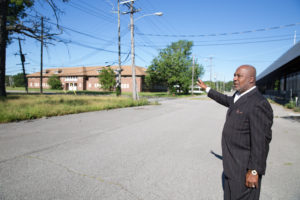
“Residents of our city have not been served the way they need to be served,” says Beatty, Detroit business owner and vice president of Greektown Casino.
As a principal partner in what could be one of the single most impactful neighborhood developments of the coming decade, he says Detroiters may soon have fewer reasons to cross city limits for their consumer needs.
An estimated $1 billion of investment is expected to begin within the next year at the former Michigan State Fairgrounds when ground is broken at 160 acres on Woodward Avenue near Eight Mile Road.
Backed by Michigan native and NBA legend Earvin “Magic” Johnson and his partners in Magic Plus, LLC, the mixed-use site is slated to include housing for seniors and veterans, a satellite college campus and educational facilities, and shopping outlets on par with chains found in the local suburbs.
Seven years are projected to fully complete the development, which will include a public park.
“It’s important, first of all, to recognize development is not something that happens overnight,” says Beatty.
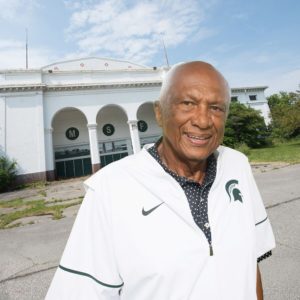
He and other Magic Plus team members know that the fairgrounds effort, which has experienced delays and scrutiny from residents, has mixed support. Part of public criticism about the project’s perceived commercial focus stems from its historic location and the nostalgia generations associate with playing carnival games and munching on treats during outings to the Michigan State Fair, Beatty says.
Woodward’s location welcomed Detroiters to the annual event from 1905 to 2009 when the state’s budget could no longer support it. Since then, the land and its remaining structures have been largely devoid of life, aside from daily bus passengers, many of whom know the site only as a Detroit Department of Transportation stop.
“The city is struggling for accessibility that most of our suburban friends enjoy,” says Beatty.
“When you think about the fact that there is only one major grocery store (chain outlet) within the city limits,” he says, “that, in itself, is an absurdity.”
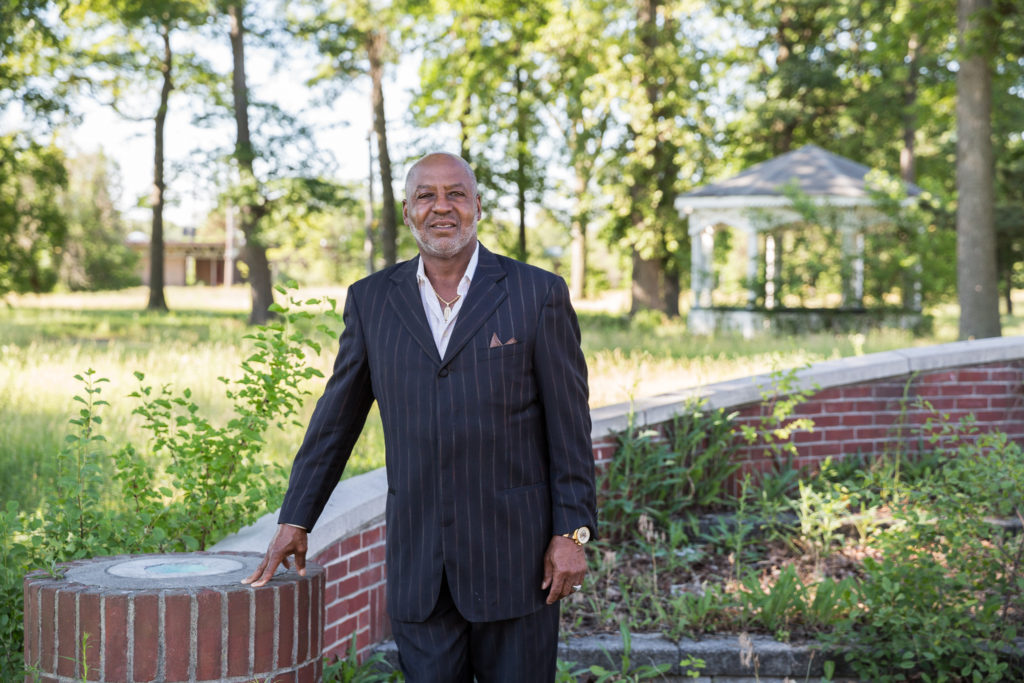
Bringing homes and traffic to “the largest parcel of assembled land in the city of Detroit,” literally around the corner from Gateway shopping plaza, which Beatty also developed as part of another team, will help re-circulate dollars within the community, he adds.The Michigan State Fair development’s success would show evidence of sustainable commercial investment in a neighborhood of modest income. While Beatty says most surrounding households average a yearly income in the $50,000 range, a study suggests the retail activity could generate as much as $82 million in one year. Other projections show:
- Consumers within the surrounding neighborhoods will account for 60 to 70 percent of total retail sales.
- The location can support as much as 266,510 square footage of retail and restaurant development.
- Commuter traffic, land access, design, and a lack of other competitive commercial development in the neighborhood all favor the complex’s success.


 Christopher Stralkowski, executive project manager, says support for the fairgrounds initiative won’t come solely from Detroiters, but also from consumers who live outside the city, reversing the cash flow out of the city that has undermined ambitious commercial endeavors of the past. The site’s proximity to downtown Ferndale, which bustles with shoppers and night life a mile away, is an asset, he says.
Christopher Stralkowski, executive project manager, says support for the fairgrounds initiative won’t come solely from Detroiters, but also from consumers who live outside the city, reversing the cash flow out of the city that has undermined ambitious commercial endeavors of the past. The site’s proximity to downtown Ferndale, which bustles with shoppers and night life a mile away, is an asset, he says.
“It’s a gateway, coming and going,” says Stralkowski. “It’s vested by its neighbors, too. The neighbors in
this particular area have been very involved.”
Stralkowski credits Magic Plus principal partner Joel Ferguson for envisioning a mixed-use complex that needs proper resource management and the right tenants.
“He made us a plan that is absolutely fabulous,” Stralkowski says. “Our challenge, as a developer, is to figure out how we can afford this plan and how to build this plan.”
Obstacles that have delayed the plan’s progress include a “huge amount of contamination” in the southeast corner of the parcel, he adds.
“We were not prepared for the state of the environmentals on the site, which were completed for the sale but not for redevelopment purposes” he says.
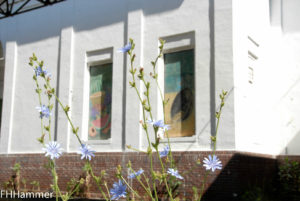
Maintaining historic fairgrounds structures, like the veterans memorial statue and the coliseum building where Wayne State University’s hockey team once played, also presents a challenge Magic Plus intends to address. Plans include restoration of the band shellfor potential programming, like outdoor musical performances or college commencement ceremonies.
While the full vision might be exceptionally grand for a plot that has virtually blended into the background tapestry of gas stations and weathered storefronts that line its side of Woodward, Beatty is confident about the possibilities.
“The site has a tremendous opportunity for people living, learning. It has a tremendous amount of potential to satisfy age groups from here to there,” he says, raising a hand to different heights, “all in the same place.”
A resident of the Palmer Park golf club subdivision, minutes away from the fairgrounds, Beatty says he can personally attest to consumer needs the development will fulfill.
“It is part of the entrepreneurial reality that says I have to support and sustain a customer base, to maintain my business,” he says.
“I know what people need because I’m ‘people.’ I’ve lived here my entire life.”
Editor’s Note: TheHUB’s Economic Development Director Rob Dewaelsche contributed to this article.
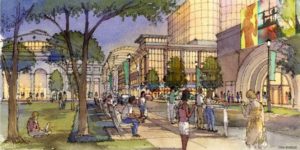
See more of TheHUB’s coverage of District 2:
More reasons to #LiveLoveDetroit
Making Magic: Former Fairgrounds is site of $1 billion vision
Citizens organize around former Fairgrounds’ future
Stop the presses: Fitzgerald project publicity must wait on results
Breaking Barriers: University strives to meld campus with community
Matchmaker: Motor City Match builds dreams in District 2 and citywide
A Sip of Success: Café aims to bring residents, students and businesses under one roof
Celebrating a Century: Sherwood Forest turns 100
Partners for Progress: Teamwork guides multi-million-dollar neighborhood fund


